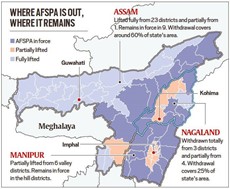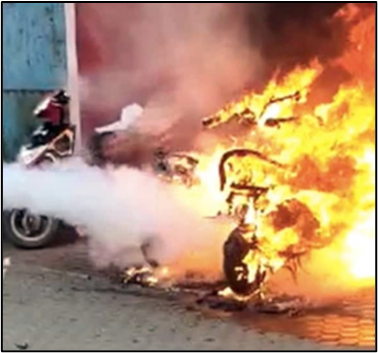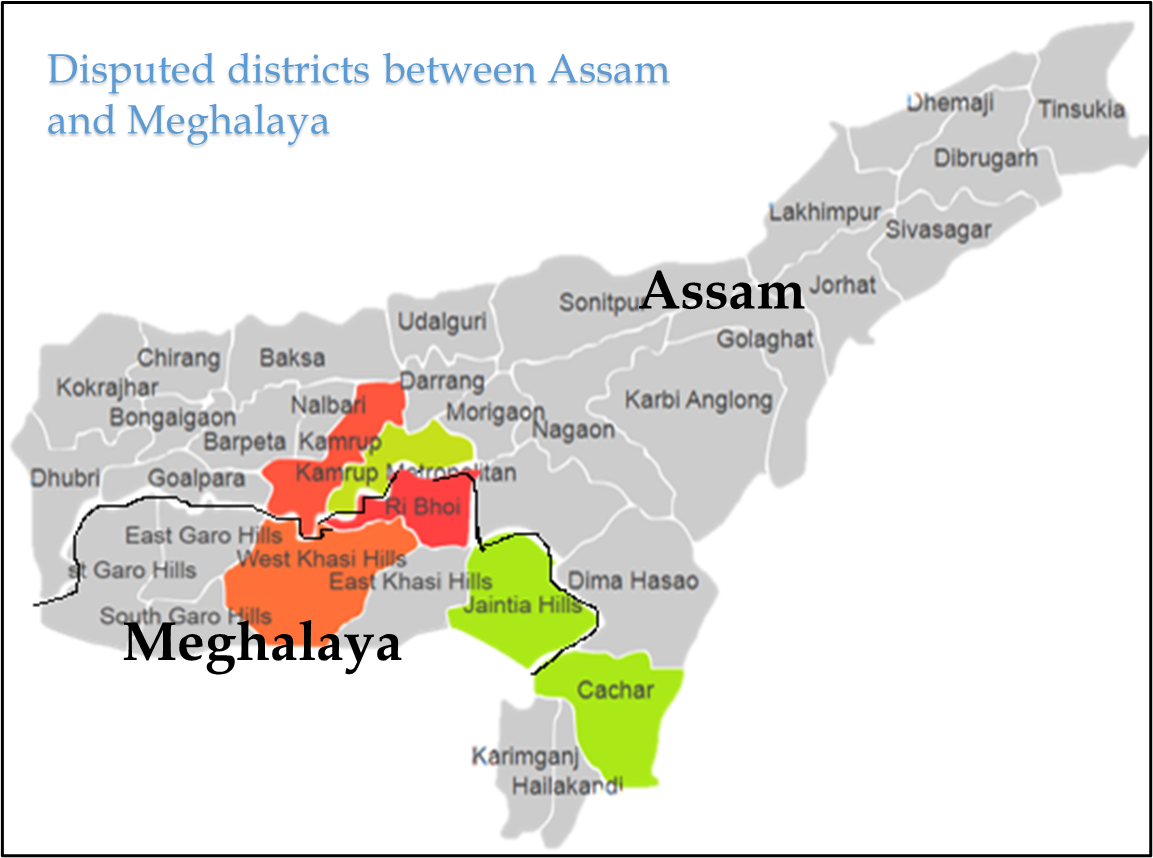Wednesday, 9th March 2022
Stagflation due to soaring oil prices
In News
Rising oil prices in the face of the current Russia-Ukraine tussle has made stagflation a real looming danger worldwide and in India.
What is Stagflation?
- It refers to a toxic combination of rising unemployment and negative gross domestic product GDP which creates economic stagnation.
- Unlike what happens in a recession, where businesses fold, manufacturing output declines, and demand, and thus, prices, fall, stagflationary environments come with increased prices and high levels of inflation, creating an especially difficult problem to solve.
- It was long considered an improbable event since mainly because unemployment and inflation tend to move inversely: When unemployment is high, prices usually decline because demand lessens, and vice versa.
- But Stagflation occurred in the United States in the 1970s as a result of rising unemployment, slow economic growth, and an oil crisis.
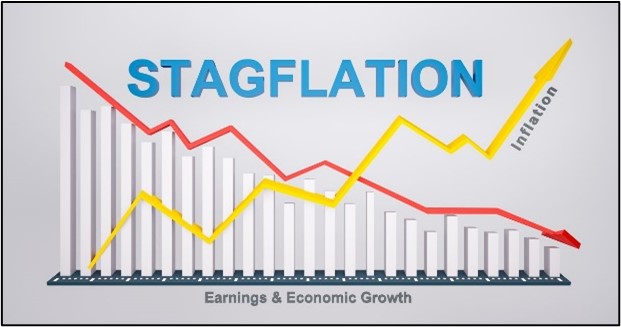
How is Stagflation caused?
- The onset of such an event is led by sluggish economic growth and rising unemployment.
- In such dismal environment, if there is a supply shock in the economy, it may cause stagflation.
- Supply shocks are unexpected events that cause major disruptions in a supply chain, like a war, a natural disaster, or, in contemporary times, the global COVID-19 pandemic.
Why Stagflation may occur in India due to the current crisis?
- Overall retail inflation in India, based on the consumer price index (CPI), was at 6% in January 2022 and has been rising steadily now since September 2021.
- While India is not directly involved in the conflict, it will be badly affected if oil prices move higher and stay that way, with India importing 84% of its total oil demand.
- In the case that the governments — both Centre and state — do not cut taxes, higher oil prices will further increase inflation and raise the general price level.
- A 10 per cent increase in crude oil prices raises wholesale inflation by 0.9 per cent and retail inflation by 0.5 per cent.
- Higher inflation would rob Indians of their purchasing power, thus bringing down their overall demand, which constitutes 55% of India’s total GDP.
- Lower demand would disincentivise businesses from investing in new capacities, which, in turn, will exacerbate the unemployment crisis and lead to even lower incomes, affecting GDP growth.
- Hence, it can be argued that if crude oil continues to spike and stays high for long even as India’s GDP growth momentum fails to gather pace, we could be looking at stagflation in the near future.

How is stagflation combated?
- Central banks usually have to fight inflation or slow growth, not both at the same time. Usually, the bigger of the two evils is focused on first – the slow rate of growth.
- For example, the Central bank may choose a series of quantitative easing measures designed to increase liquidity and spur growth, mainly through increased credit and lending.
- As growth picks up due to the high liquidity in the market, the interest rates are raised to suck out the excess liquidity from the market.
- This may lead to temporary slowing of GDP growth but stabilizes inflation.
- In case of current Indian economy, cutting down on excise duty of petrol and diesel may cause a spike in fiscal deficit, hence it may not be a feasible option.
- Moreover, riding on high levels of government spending, services sector that is reopening, strong export growth because of good global demand, GDP growth rate will stabilize in the future if consumer demand picks up.
- RBI, in that case may look towards raising interest rates to tackle inflation.
- The Reserve Bank of India has kept the repo rate at 4% and reverse repo rate at 3.35%, unchanged in its first monetary policy review after Union Budget 2022.
Sources:
Building Construction Environment Management Regulations, 2022
In News
Ministry of Environment, Forests and Climate Change has issued a draft notification of the Building Construction Environment Management Regulations, 2022.
About the News
- The rule will be applicable for construction sites for both residential and commercial buildings, ensuring tree be planted such to ensure that 10 per cent green cover for every plot.
- Compliance with the new rules however do not substitute approvals required to be obtained under other environmental laws for clearances and in the event of the proposed rules clashing with any other regulations, whichever rule is more stringent will apply.
What are the important proposals of the Bill?
- Applicability: The proposed regulations for buildings will be applicable on new constructions with a built-up area of 5,000 sqm or more. They will also apply for renovation or
- Mandatory clause: The draft notification mandates at least 10% of the plot area under tree cover and makes rainwater harvesting or groundwater recharge systems, and wastewater treatment plants compulsory. The rule mandates at least one tree for every 80 square meters of land.
- Ceiling on use of topsoil: For buildings, roads, paved areas, and external services, topsoil should be stripped only up to a maximum depth of 20 cm. The soil should be stockpiled in designated areas and reapplied during the plantation of the proposed vegetation on the sites.
- Conditions for certification: Projects will not get completion or occupancy certificates if a common sewage plant is not available, on-site plants with 100 per cent waste water treatment capacities will need to be installed.
- Conserving sensitive zones: Construction will not be allowed on wetland and waterbodies.
- Groundwater extraction: No groundwater should be used for building construction without the Central Ground Water Authority’s approval.
- Dual plumbing system: Projects will need to put in place dual plumbing systems—one for supplying fresh water for drinking, cooking and bathing, and another for supplying treated water for toilets, landscapes, fire-fighting etc.
- Ceiling: Projects above 20,000 square meters will require on-site solid waste management facilities with arrangements with authorized recyclers or municipal agencies for disposing non-biodegradable waste.
- Assuring Transparency: Set of standardized, outcome-based and quantifiable environmental regulations be formed for effective environment protection and management and “to bring in transparency in approach and encourage ease of doing business.
- Robust audit mechanism: Expansion of monitoring mechanisms through third-party audits, encouraging green certifications and leveraging on the presence of regulatory agencies at different levels of governance.
Sources:
Green channel for health scheme
In News
The government has recently created a fast-track channel for insurance claims under Ayushman Bharat, to reduce delays that currently seem to plague the health insurance scheme.
About the News
- Green Channel Payment (GCP), introduced by the National Health Authority (NHA), aims to expedite claim adjustments for empaneled hospitals treating Ayushman Bharat Pradhan Mantri Jan Arogya Yojana (AB PM-JAY) beneficiaries.
- AB PM-JAY is world’s largest health assurance
- It offers cashless and paperless annual healthcare services benefits of up to ₹5 lakh per family for secondary and tertiary care hospitalization to over 100 million poor and vulnerable families.
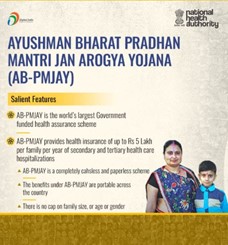
Understanding Green Channel Payment (GCP):
- Automatic Release of Claim amount: Under GCP, a partial payment of 50% of the claim amount will be released automatically to hospitals through the system at the time of claim submission.
- The balance will be released following the usual claim adjustment process.
- Currently, the empanelled hospital receives payment once its claim is approved and paid by the State Health Agency (SHA).
- Timely and judicious adjustments of claim: It will ensure timely and judicious adjustments of claims raised by hospitals and it is the key to the effective implementation of the AB PM-JAY scheme.
- Though the NHA mandates for submission of claim by hospital, a turn-around time limit of 7 days, 15 days for settlement and payment of non-portability claims, the actual time taken is far higher.
- Benefits: GCP will
- Increase participation of hospitals under PM-JAY
- Improves working capital for empanelled hospitals and
- Cross-subsidizes treatments.
- Implementation: The scheme is operational in all states and union territories except West Bengal, Odisha, and Delhi.
- So far, a network of more than 25,000 public and private hospitals have been empanelled with AB PM-JAY.
Source:
Image source:
Jhaverchand or Zaverchand Kalidas Meghani
On March 9, 1947 Jhaverchand or Zaverchand Kalidas Meghani breathed his last. He was a poet, social reformer, writer, and freedom fighter from Gujarat. He is a well-known name in the field of Gujarati literature. Mahatma Gandhi spontaneously gave him the title of ‘Raashtreeya Shaayar’. Besides this he received many awards like Ranjitram Suvarna Chandrak and Mahida Paaritoshik in literature. He authored more than 100 books. His first book was a translation work of Rabindranath Tagore's called Kathaa-u-Kaahinee titled Kurbani Ni Katha (Stories of martyrdom) which was first published in 1922. He contributed widely to Gujarati folk literature. He went from village to village in search of folk-lores and published them in various volumes of Saurashtra Ni Rasdhar. He was also the Editor of Phulchhab Newspaper of Janmabhoomi group (which is being published till date from Rajkot).
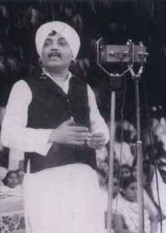
Source:
Changing Nature of Warfare
In News
The Russia-Ukraine war has brought to fore the possibilities of an unprecedented armed conflict around the Globe.
About the News
- If the conflict continues, there is a possibility of Russia using Chemical and Biological weapons against Ukraine. Russia has also increased its attacks on the cyber establishments of Ukraine.
- The USSR had the largest biological weapons programme the world has ever known and parts of it have continued uninterrupted since the break-up of the Soviet Union. Russia has three military biological facilities
- Russia may be willing to use smaller battlefield nukes – and that this poses a stark risk of miscalculation.
- Meanwhile, the Army Chief Gen M. M. Narvane has suggested that India should scale up its cybersecurity architecture and increase its readiness for information warfare.
Introduction: Importance of Warfare
Warfare enjoys a pre- eminent position in statecraft and diplomacy. Most of the decisions related to foreign relations and diplomacy are centred around warfare. This is evident from the fact that decisions of the individual countries at the international level are either to avoid war, or to prepare for war. This can be elucidated with events like:
- The formation of the United Nations with the main objective of avoiding the scourge of war
- The relations between India and Pakistan or India and China
- Sino- U.S rivalry for supremacy
- Dispute among Russia and the west
What are the new forms of warfare?
- Cyber Attacks: Countries such as Russia, China and Israel are resorting to cyber-attacks which can cripple the critical infrastructure of the adversary. The use of drones for surveillance as well as attacks have increased.
- Social media and the innovative use of cyberspace have helped even individuals to take on the States through suicide attacks and lone wolf attacks, with the potential to cause social tensions and disharmony.
- Data mining and Artificial Intelligence (AI) can be used to influence public opinion, effecting the result of the elections. The recent example of Russia’s interference in the Presidential elections of U.S.A is a case in point.
- Socio-psychological Tactical attacks: Countries manipulate the refugee populations to incite protests and conduct espionage through friends and relatives in the home country.
- Terrorism: The emergence of powerful terrorist organisations and their use by nations to destabilise adversaries – like Pakistan funding terror activities in India. The spectrum of conflict now ranges from conflicts between states to conflict with non-state actors and proxies.
- Even non-state actors are increasing their capabilities in traditional warfare which can be seen from the overtake of Afghanistan by the Taliban.
- Biological & Chemical war: Looking at the extremely competitive scenario, countries have opted for biological and chemical weapons. Russia has often used nerve agents to kill its adversaries. Syria regime used chlorine gas, sarin and mustard gas against the rebels.
- Nuclear War: Development of tactical nuclear weapons by countries such as Pakistan creates uncertainty in the entire South Asian region. (Tactical weapons are short range nuclear arms which can be used in the battlefield.)
- Diplomatic War: Very aggressive foreign policy stance taken by countries – Like China’s ‘Wolf warrior diplomacy’. In this type of conduct, the diplomat fiercely attacks the adversary, at times adopting a very aggressive and confrontational stance.
- Economic Warfare: There are new avenues of economic warfare such as the BRI – Belt and Road Initiative of the Chinese establishment, where economic aid is provided to further military and strategic objectives. Another variant is the debt trap diplomacy employed by the Chinese in Sri Lanka and Pakistan.
The Possible reasons for changing nature of Warfare
- Technological Progress: The rapid progress in technology with the emergence of Artificial Intelligence, Robotics, Big data and their incorporation in military hardware has increased the uneasiness of countries.
- Political Changes: Emergence of powerful and populistic leaders and cut throat politics where no leader can appear to be weak.
- Interference in the domestic politics of other countries to destabilize the government.
- Rise of Proxies: There has been a rise in proxies, with complicated interests and relations to their “patrons.” Proxies are sometimes not acknowledged, but the secret usually is an open one.
- Soldiers and Citizens: The density of soldiers on the battlefield has been declining. More recently, in its 2006 war against Israel, Hezbollah used civilians and civilian facilities, like hospitals, to provide havens for their fighters.
- Information Flow: By enormously increasing information flow around the world, the Internet, small satellites, drones, improved sensors, cell phone video cameras and broadband connectivity, are transforming both war and politics. These technologies allow military forces to find targets and strike them with great precision from long distances.
- Insurgent movements and terrorist organizations: Such movements and organizations have been able to keep fighting under circumstances that would compel a conventional army to surrender. They use information – both truthful and false – as an invaluable weapon of war.
Impacts of the Changing nature of warfare
- The democratic rights of the people are being crippled in the name of national security and increased surveillance. Unstable geopolitical situation, Authoritarian leaders have strengthened their positions.
- There has been a rise in the defence budgets of countries. This diverts the resources which could be invested to provide food, water and shelter to the people along with social security.
- The process of globalisation has been roadblocked with the rise of protectionism and nationalism.
- Terrorist groups adopt war strategies that blur lines between the domestic and the international, between civilian and military, between diplomacy and armed conflict and between crime and war. Often, the goal is “no surrender” – denying victory to their adversary.
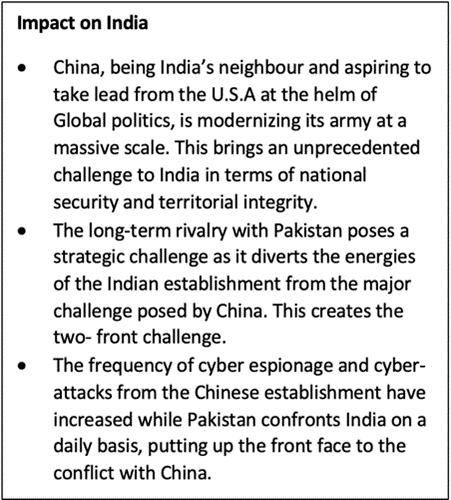
What should be India’s strategy in changing times?
India should continue to focus on building internal capacity. The stress should be on:
- Ensuring robust and sustainable long term economic growth.
- Modernizing the armed forces and ensuring co- ordination between the defence forces and the intelligence agencies.
- Developing infrastructure along the border.
- Set up a dedicated cyber forces like USA and China.
- Ensure social harmony and brotherhood within the borders.
- Co-operating with like-minded countries like Japan.
India should charter its own path in the unstable geo-political environment. It is imperative that the Indian Foreign policy and the national interest are not guided by American sensitivities or Chinese passions.
Question: There has been change in the form of warfare. Discuss.
Sources:
Pal-Dadhvav massacre
This is image of Motilal Tejawat, the leader of the Eki movement, carried out by the people of the villages of Pal, Dadhvav, and Chitariya in Gujarat. On March 7, the Gujarat government marked 100 years of the Pal-Dadhvav killings, calling it a massacre “bigger than the Jallianwala Bagh”. The Pal-Dadhvav massacre took place on March 7, 1922, in the Pal-Chitariya and Dadhvaav villages of Sabarkantha district, then part of Idar state. The Eki movement was to protest against the land revenue tax (lagaan) imposed on the peasants by the British and feudal lords. Nearly 1,000 tribals (Bhils) fell to bullets, while others jumped into two wells. Tejawat was shot at twice, but was taken to safety by the villagers on a camel. To this day, local tribals recount the Pal-Dadhvav massacre in songs sung at weddings and fairs. One such song is ‘Hansu dukhi, duniya dukhi’.
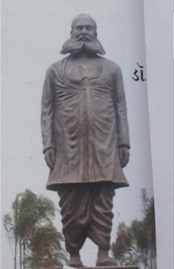
Source:
Side Channel Attacks
- Context: Indian researchers have built a low-energy security chip to prevent side-channel attacks (SCAs) on IoT (Internet of Things) devices.
- A side-channel attack is any attack based on information gained from the implementation of a computer system, rather than weaknesses in the implemented algorithm itself e., timing information, power consumption, or even sound can provide an extra source of information, which can be exploited.
- In other words, SCAs take advantage of security exploits where information can be gathered from the indirect effects of the functioning of the system hardware rather than attacking a programme or software directly.
- Traditionally, SCAs have been used in cryptography. If some data is being processed and there is a secret key used to encrypt or decrypt it, SCAs are used to recover this key.
- It can be applied to any data that we want to keep as a secret. For example, it can be used on our smartwatch to extract our ECG and heart rate signal.
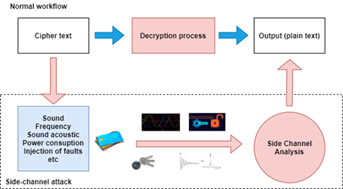
Source:
- Indian researchers develop low-energy chip architecture to prevent attacks on IoT devices
- Side channel attack
Image source:
Boltzmann medal
- Context: Deepak Dhar, physicist, from the Indian Institute of Science Education and Research, Pune, has been selected for the Boltzmann medal.
- He becomes the first Indian to win this award.
- Boltzmann medal is an award that honours outstanding achievements in the field of statistical physics and is given to one or two persons, once in three years.
- It was named after the physicist Ludwig Boltzmann and was initiated in 1975.
- It is awarded by the Commission on Statistical Physics (C3) of the International Union of Pure and Applied Physics and was first awarded to the Nobel laureate (1982) K.G. Wilson.
- The award consists of the gilded Boltzmann medal with the inscription of Ludwig Eduard
- It is given only once to a person and on the condition that that person has not won the Nobel prize so far.

Source:
Image source:
‘SAMARTH’ Initiative
- Context: Ministry for Micro, Small and Medium Enterprises (MSME) has recently launched SAMARTH initiative.
- SAMARTH is a special entrepreneurship promotion drive for women.
- Under SAMARTH, 20% seats in free skill development programmes, organised under skill development schemes of the ministry, will be allocated for aspiring and existing women entrepreneurs.
- This will benefit more than 7,500 women in 2022-23.
- Moreover, 20% of MSME business delegations sent to domestic and international exhibitions under for marketing assistance implemented by ministry will be dedicated to women-owned MSMEs.
- Women entrepreneurs can also avail a 20% discount on annual processing fee on commercial schemes of the National Small Industries Corporation (NSIC) in 2022-23.
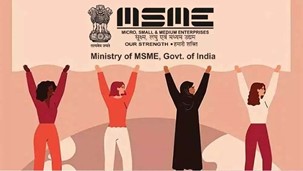
Source:
- MSME Ministry launches ‘SAMARTH’ to promote women entrepreneurship
- MSME Ministry launches 'SAMARTH' to promote women entrepreneurship
Image source:
Nizamuddin Markaz
- Context: The Union government has opposed the complete reopening of the Nizamuddin Markaz building in south-east Delhi owing to the pandemic.
- Also called Banglewali Masjid, Nizamuddin Markaz is a mosque located in Nizamuddin West in South Delhi.
- It was built in Nizamuddin by Mirza Ilahi Baksh in the late 1800s.
- It is the birthplace and the global headquarters of the Tablighi Jamaat network.
- Tablighi Jamaat is Sunni missionary and reformist movement started in 1926 by Muhammad Ilyas Kandhlawi.
- The mosque has 6 stories and serves as prayer hall in the daytime and as sleeping quarters in the night.
- There is a Madrasa along with the Markaz Masjid named Kashiful Uloom
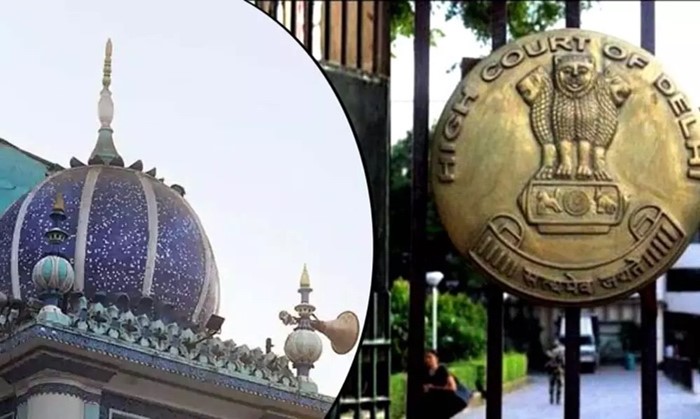
Source:
Image source:
How women can lead transformation of film industry: IE
Essence: According to the World Economic Forum's Global Gender Gap Report 2021, another generation of women would have to wait for gender parity even after a century of celebrating International Women's Day. The issue now is, "Why?" The purpose of this article is to attempt to address this topic from the perspective of women in film industry. Lack of commitment to address women's employment difficulties in cinema; lack of grievance redressal processes; and deep-seated patriarchy and chauvinism all contribute to uneven opportunities. In the media and entertainment business, achieving gender parity in movies will be a long, tough war. As a result, women must speak up, and a watchdog and gender advocacy group are essential. Governments and courts, as well as non-profit organisations, the media, and research organisations, should all have a role in bringing about change. It's difficult to create solid, long-term, data-driven solutions for the industry and plan advocacy for it because it's one of the least studied and hence underreported workplaces.
Why should you read this article?
- To comprehend why, after a century of commemorating International Women's Day, gender parity remains a problem in India, particularly in Indian cinema?
- To figure out what measures we can take to solve the problem.
Source:
As Prospects of Arms Control Wane, the Rise of Nuclear Risk: HT
Essence: The editorial talks about the failure of nuclear non-proliferation model amongst the powerful nations to prevent rise in nuclear threats and its present impacts. The NPT ensured that nuclear weapons were possessed by the P5 nations but USSR’s successors- Belarus, Kazakhstan and Ukraine possessed missiles, technology, know-how and infrastructure, which had to be disposed of. Though the Budapest Memorandum of 1994 ensured the same, however it was not regarded by the parties present, to ensure non-aggression and security assurances. Ukraine’s sovereignty was repeated challenged since 2014.
Uncertainties have grown with Russia asking its deterrent forces to be at high alert. Such exchange of words has previously happened between USA-North Korea as well. Lately, countries across East Asia have accelerated their nuclear associations, a tendency which brings world to the edge of nuclear risk.
Why should you read this article?
- To understand the history of NPT with major nuclear powers of the world.
- To know the role of Russia in present world nuclear associations and race.
Source:
Biker’s safety
Background
- Road accident related fatality are on a rise due to lack of awareness and ignorance of safety precautions like wearing helmets on bikes.
- A couple from Thettu village are determined to address this issue by distributing helmets.
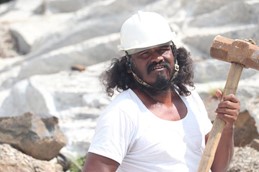
About the work of the couple
- Burusu Amduru Raju and his wife Revathi are stone cutters from Andhra Pradesh.
- Their daughter died at the age of 8 years due to head injuries after falling off a two-wheeler. She was not wearing a helmet while on the ride.
- To fulfil the wish of their daughter of distributing free helmets, the couple is on a mission to ensure safety of bikers.
- The couple save up money all year and distribute helmets on their daughter’s birth and death anniversary.
- They do not compromise on the quality, while a local vendor helps them in their cause by not charging any profit from the sale.
Quote: “Bahujanahitāya bahujanasukhāya lokānukampāya: For the good of the many, for the happiness of the many, out of compassion for the world.”― Gautama Buddha
Source:
Share the article
Get Latest Updates on Offers, Event dates, and free Mentorship sessions.

Get in touch with our Expert Academic Counsellors 👋
FAQs
UPSC Daily Current Affairs focuses on learning current events on a daily basis. An aspirant needs to study regular and updated information about current events, news, and relevant topics that are important for UPSC aspirants. It covers national and international affairs, government policies, socio-economic issues, science and technology advancements, and more.
UPSC Daily Current Affairs provides aspirants with a concise and comprehensive overview of the latest happenings and developments across various fields. It helps aspirants stay updated with current affairs and provides them with valuable insights and analysis, which are essential for answering questions in the UPSC examinations. It enhances their knowledge, analytical skills, and ability to connect current affairs with the UPSC syllabus.
UPSC Daily Current Affairs covers a wide range of topics, including politics, economics, science and technology, environment, social issues, governance, international relations, and more. It offers news summaries, in-depth analyses, editorials, opinion pieces, and relevant study materials. It also provides practice questions and quizzes to help aspirants test their understanding of current affairs.
Edukemy's UPSC Daily Current Affairs can be accessed through:
- UPSC Daily Current Affairs can be accessed through Current Affairs tab at the top of the Main Page of Edukemy.
- Edukemy Mobile app: The Daily Current Affairs can also be access through Edukemy Mobile App.
- Social media: Follow Edukemy’s official social media accounts or pages that provide UPSC Daily Current Affairs updates, including Facebook, Twitter, or Telegram channels.


